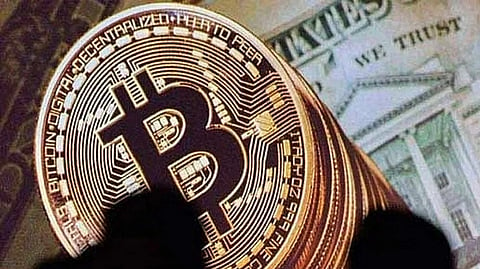

NEW DELHI: When we talk about economies, we speak about countries where production, consumption and trade activities take place.
Blockchains are a term used to describe decentralised computer networks. These two appear to be unrelated at first glance. However, the ecosystems of public blockchains, which run decentralised databases and software programmes, are beginning to resemble national economies more and more as on-chain activities expand rapidly.
However, in this case, the nation is a decentralised digital network rather than a physical region.
As we gear up to celebrate our 74th Republic Day, can India make a resolve, not just a resolution to leverage the new age economy - a decentralised, trust infused economy? The G20 Presidency, the advent of Web3, a blockchain powered economy? I say yes!
New “fiscal” and “monetary” policy tools can now be implemented in blockchain economies thanks to the programmable properties of public blockchains, which in many situations have benefits over the conventional economic policy instruments of national governments.
A de facto “universal basic capital income” can also be introduced for their network’s “citizens” by the proof-of-stake mechanism used by second-generation public blockchains. With long-term consequences for income distribution as blockchain economies develop, this might be a significant advancement in the way economic systems transfer values among participants.
DApps, which allow for user interaction, can effectively be deployed on top of public blockchains. Non-fungible token assets (NFTs) and decentralised finance (DeFi) apps are now the two main economic activities on layer 1 blockchains and related layer 2 chains. (Layer 2 chains are secondary blockchain networks that depend on the underlying layer 1 for security but often provide faster and less expensive transactions.)
Nations have traditionally tried to tame recessions and booms by utilising tools from fiscal (taxes and public spending) and monetary (interest rate and money supply) policy. Additionally, blockchain-enabled nations have tools for monetary and fiscal policy (staking yield, token issuance, and burn). And they might perform more effectively than the government’s economic policy tools in many situations. Because to finite time horizons and flawed decision-making, such counter-cyclical fiscal policies are rarely implemented effectively.
The budgetary policies of blockchain-enabled countries are preprogrammed in self-executing smart contracts and are hence impervious to human judgement. Consider the gas cost paid by users of the Ethereum network to the platform as a sales or value-added tax on each transaction. Code is used to implement the on-chain fiscal policy’s countercyclical nature. No one or anything can change it on a whim, no matter how strong they are.
Although nascent, Ethereum has a $150 billion DeFi total value locked (TVL). The size of the Ethereum economy is comparable to Slovenia if we make the back-of-the-envelope assumption that its GDP is one-third of its TVL.
Digital currency’s potential is starting to dawn on actual nation-states. Over 80% of central banks worldwide, according to the BIS, are either developing or launching their own CBDC (central bank digital currency). Retail CBDCs have, however, just recently begun to be really used by users. It may be time for nation-state governments to examine how to create a competitive national currency of the future by taking a cue from blockchain-enabled nations’ token playbooks.
Let’s take small steps towards this, before we take strides. The time is now. A blockchain empowered economy will drive an economically empowered nation.
Visit news.dtnext.in to explore our interactive epaper!
Download the DT Next app for more exciting features!
Click here for iOS
Click here for Android